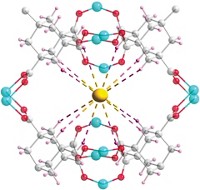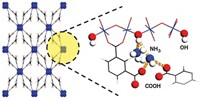Advertisement
Grab your lab coat. Let's get started
Welcome!
Welcome!
Create an account below to get 6 C&EN articles per month, receive newsletters and more - all free.
It seems this is your first time logging in online. Please enter the following information to continue.
As an ACS member you automatically get access to this site. All we need is few more details to create your reading experience.
Not you? Sign in with a different account.
Not you? Sign in with a different account.
ERROR 1
ERROR 1
ERROR 2
ERROR 2
ERROR 2
ERROR 2
ERROR 2
Password and Confirm password must match.
If you have an ACS member number, please enter it here so we can link this account to your membership. (optional)
ERROR 2
ACS values your privacy. By submitting your information, you are gaining access to C&EN and subscribing to our weekly newsletter. We use the information you provide to make your reading experience better, and we will never sell your data to third party members.
Analytical Chemistry
Selective sorbent traps xenon and krypton
Porous material could be used to separate gases liberated during nuclear fuel reprocessing
by Mitch Jacoby
June 27, 2016
| A version of this story appeared in
Volume 94, Issue 26
By using computational methods, a multi-institutional research team has analyzed chemical and physical properties of 125,000 porous metal-organic framework (MOF) materials and found that one of them is exceptionally good at separating xenon and krypton from gas mixtures. The team then confirmed that prediction experimentally (Nat. Commun. 2016, DOI: 10.1038/ncomms11831). Xenon and krypton, along with oxygen, nitrogen, carbon dioxide, and other gases, are evolved when spent nuclear fuel is reprocessed to extract valuable fissile material. Reprocessing facilities trap and separate the gases, which include radioactive isotopes, via cryogenic distillation. But that approach is energy-intensive and expensive. Looking for a better option, Praveen K. Thallapally of Pacific Northwest National Laboratory and coworkers searched for sorbents that could selectively trap and separate xenon and krypton during fuel reprocessing. Nonradioactive xenon could be used for commercial lighting, imaging, and other applications, whereas the recovered krypton contains long-lived isotopes and must be sequestered. The team identified SBMOF-1, a MOF made from calcium ions and sulfonyldibenzoate linkers, as the best candidate. The team found that SBMOF-1 exhibits the highest xenon adsorption capacity for a MOF and an exceptional ability to separate xenon and krypton from each other and from the other gases by size exclusion.





Join the conversation
Contact the reporter
Submit a Letter to the Editor for publication
Engage with us on Twitter